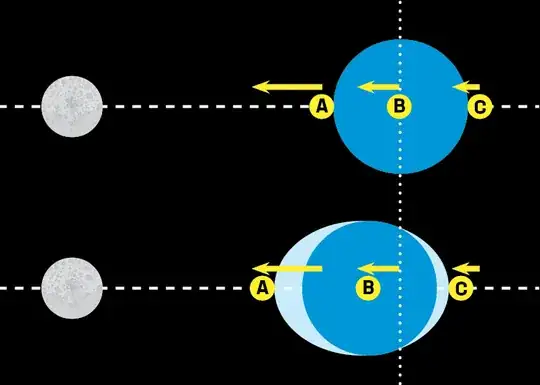I am interested in making a simplified model that represents only the effect that the moon has on Earths tides. In this model I am going to assume that the earth is completely spherical (with no continents or surface variation) and covered entirely by a single ocean of water.
In simple terms I want to know if the tidal bulges on the earth are different sizes or if they are of equal size?
In many diagrams it appears that the bulges are symmetrical, but if the side of the earth facing the Moon is experiencing a greater gravitational force, and the far side a weaker gravitational force, would that not result in the side facing the Moon having a proportionally larger tidal bulge?
I do appreciate that most diagrams are purely illustrative and that the actual difference in size would be too small to practically depict on a visual diagram.
I have attached a diagram, that while exaggerated, I am wondering if it is more accurate that showing the bulges as equal in size?
